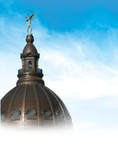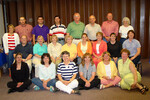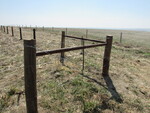Posted date: Aug 30, 2021
by: Admin My Local Life
631 Views
Nutrient Management is the efficient and effective use of plant nutrients to achieve economic, social and environmental benefits with the involvement of farmers and other stakeholders. Nutrient stewardship builds crop production capacity by assisting farmers and consulting agronomists to be able to produce more food, feed, fiber and energy with fewer nutrient losses, resulting in sustainable crop production. Fertilizer management, improved placement and timing of plant nutrients results in more efficiency, better yields and greater profitability.

The 4R's include:
• Using the Right Source
• Using the Right Rate
• Using the Right Time
• Using the Right Place
The 4R Best Management Practice (BMP) addresses the interests of all stakeholders: farmers; input suppliers; food, feed, fiber, and energy consumers; and those concerned about the environment. The 4R’s provide flexibility to fertilizer management that takes into consideration; soil type, climate, crops grown, cropping history, management style and farm size.
4R number 1-Right Source
Always start with a soil test for nutrients already available. Then consider the amount of nutrients needed for the current yield goal. The right source means matching the current fertilizer product with soil properties and crop needs. Always balance application of nitrogen, phosphorus, potassium and other nutrients based on crop needs. Always address crop needs. Nitrogen can be wasted if inadequate P or K is stunting your crop. Sometimes high levels of some nutrients can restrict plant uptake of some micro-nutrients. Nutrient balance in soil is very important.
4R number 2-Right Rate
The right rate means matching the right application rates with crop requirements. Understanding the needs of the crop through the various growth stages is important. Crop history and in season testing are helpful tools. Time and money can be saved by applying only the nutrients needed. Modern precision farming tools allow variable rates of nutrients to be applied in different parts of a field based on crop needs by soil type.
4R number 3-Right Time
The right time means synchronizing nutrient availability with crop needs. Apply N fertilizer in spring rather than fall. Crop producers should consider split applications of nitrogen. Top dressing nitrogen can be done later in a growing season using high-clearance equipment. Weather conditions can also affect timing of nitrogen application. Controlled release fertilizer can be effective and improve fertilizer efficiency. Leaching can occur in wet conditions if fertilizers are applied to early or at very high rates. Do not surface apply nutrients when there is risk of runoff. For example, when soil is frozen, snow covered, or the top two inches of soil is saturated.
4R number 4-Right Place
Placing nutrients where the crop can get to them when needed is very important. Broadcast surface applications are not always good. P and K on the surface do not get into the root zone and are not very effective. P and K should be place below the soil surface beside the planted crop where young plant roots can reach the nutrients soon after germination. In a heavy rain, surface applied nutrients can wash away. Nitrogen that is fall applied will tend to leach deeper into the soil below the plant root zone. To much nitrogen close to sprouting plants is also harmful to new plants.
A very helpful tool when developing a nutrient management plan for your farm and crop rotation is the NRCS Conservation Practice Standard for Nutrient Management, CODE 590. Also remember Reduced Tillage and NO-TILL practices are very beneficial to a successful Nutrient Management Plan. For assistance please contact your local NRCS Field Office.








